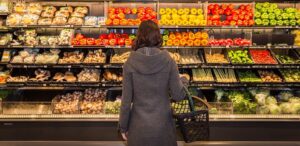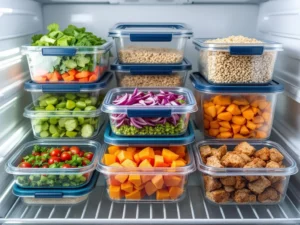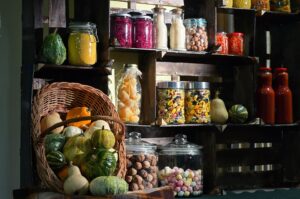
29. RETAIL TERRIBLY
According to a 2008 study in the journal Psychological Science, customers sadness levels increases the amount of money that they are willing to spend.
Study participants who watched a sad video clip were willing to pay four times as much for a product than those who watched a neutral clip about nature were.
30. WIDE AISLED OPEN
The produce section accounts for only 10 percent of a supermarket’s sales, whereas the nutrient-depleted middle aisles make up 26 percent of sales.
The most successful and healthiest shoppers tend to spend the majority of their dollars in the produce and refrigerator sections and a small percentage avoiding the middle aisles.
31. MAKE GREEN LAST ON THE SCENE
Consumers tend to shop in a counterclockwise pattern, according to a study from the Wharton School, so grocers place the produce section at the front of the store.
Why? Because research shows that shoppers who peruse the produce aisle first spend more time and money in the store.
32. ORGANIZE YOUR ORGANIC
Organic foods and beverages have seen some of the largest growth in the food industry, with sales growing from $1 billion in 1990 to $26.7 billion in 2010.
Organic foods can cost between 20 and 100 percent more than their conventional counterparts. Advocates say organic food is safer, possibly more nutritious, and often better tasting than non-organic food.
They also say organic production is better for the environment and kinder to animals.
33. BEAUTY OR THE BEAST
There has been a modern trend to only choose produce that looks ‘perfect’. Todays produce is bred to look waxy, glistening, and perfectly symmetrical but fruits and vegetables are often irregularly shaped.
Don’t let that put you off as they do not look perfect but we can assure you they taste even better than the pristine ones.
34. GET HANDY
You can learn more about a fruit or vegetable from picking it up than you can from staring it down.
Heavy, sturdy fruits and vegetables with taut skin and peels are telltale signs of freshness, so give them a little pinch, we promise they won’t mind.
35. A SHOP FOR ALL SEASONS
Health experts and chefs both often say you should eat “seasonally,” or include foods in your diet that are grown at the same time of the year you eat them.
For example, that means squash in the summer and fall, and artichokes in the spring. Eating seasonally is important, and carries benefits to your health, the planet, and your wallet.
36. THE QUIZMASTER
Nowhere in the store is your need for information more crucial than at the fish and meat counters. End up with a chewy steak or a 3-day-old scrap of salmon and you’ve wasted a meal and a good chunk of change.
Make friends with the butcher: Ask him about his favorite cuts of meat, the freshest protein in the case. He may even save some special steaks for you, give you his favorite recipes, and generally help you navigate your way through one of the most critical—and confusing—sections of the supermarket.
If the butcher isn’t the chatty type or there’s no butcher at all, maybe it’s time to shop somewhere else.
37. THINK SMALL NOT BIG
Fish build up stores of mercury and pesticides in their fat and muscle tissue. Then larger fish eat them, adding all of those contaminants to those already in their bodies. Then even larger fish eat those fish, and so on.
The higher a fish is on the food chain, the more pesticides it has stored in its tissues. So when choosing your fish, think small as they will generally be lower on the contamination scale than their larger predators.



























































